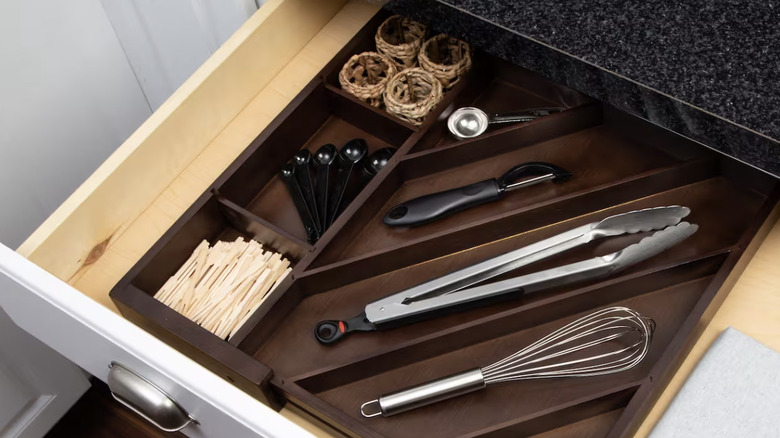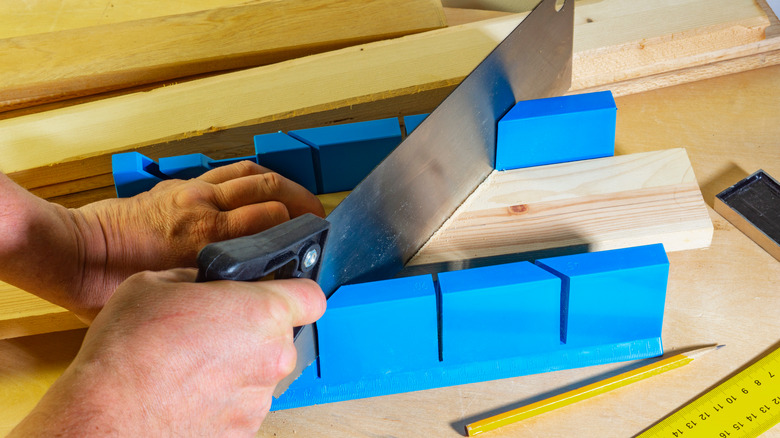Use This Diagonal Drawer Trick To Expand Your Cabinet Storage Space
We may receive a commission on purchases made from links.
It may be less conventional, but organizing your kitchen utensils in your drawers diagonally can give you a lot more usable space. In a standard cabinet drawer that is 20 inches deep, no utensil longer than about 19 inches will fit in it when placed straight into the space. On the diagonal, however, that same drawer, assuming a width of 14-inches, could accommodate utensils as long as 24-inches. That's a significant increase in storage space, and if you have a small kitchen, it could be invaluable. Whether you choose to purchase a commercially available diagonally drawer divider, one made available at a local artists' market, or perhaps even attempt to make one yourself, this could be a great time to think outside the straight and narrow storage options.
Of course, the kitchen isn't the only place we need to maximize storage space. Rulers in kids' desks, tall taper candles in dining room sideboards, and long-handled tools in workshop drawers all need places to go that are uncluttered and designated just for them. Take inventory of your house to determine your own storage needs to see where diagonal compartments might best serve you. If you have the means and find one that fits your space, go ahead and pick it up, but if you have a knack for crafting, a limited budget, or an oddly shaped drawer, read on to learn how to make your own diagonal dividers.
How to make diagonal drawer storage
It's true that diagonal drawer organizers have been commercially available for years, but if you have some decent DIY skills, you can make one yourself using MDF craft board, a miter box, and wood glue. It should cost less than $40 for all the materials, and you could make several dividers from one purchase. Craft board is paintable, too, for additional, unexpected flair.
Measure the inside of your drawer and cut your craft board to those lengths, shaving an extra ¼ inch off each side. Fashion the boards into a frame with wood glue. Secure the frame with painter's tape, then allow it to dry while working on the diagonal slats. On newspaper or an art roll, draw the dimensions of your drawer with a marker and lay out your utensils as you would like to fit them inside. You can group them together however you like — by size, type, color, etc. When you have a layout you like, pencil in the divider lines and measure them, then cut the board, using the miter box to create 45-degree angles at each end so the boards fit against the frame. Apply wood glue to the ends of the dividers and fit them into the frame as planned, then apply additional glue along the outer seams and wipe away the excess. Secure with painter's tape until the glue is dry. Your dividers should slip easily into your drawers when finished.

